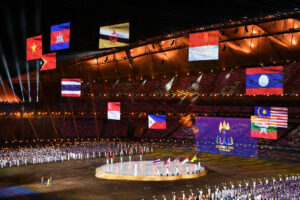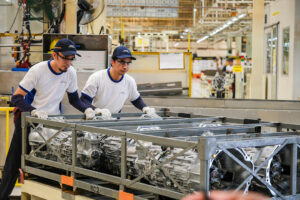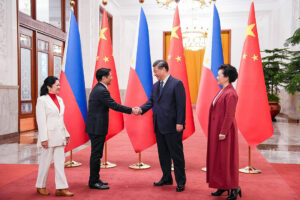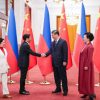MANUFACTURING OUTPUT increased for a second straight month in May at its fastest pace in 10 months, driven by food products, the Philippine Statistics Authority (PSA) reported on Tuesday.
However, analysts said lingering uncertainty over US President Donald J. Trump’s planned reciprocal tariffs could dampen demand for locally made goods.
Manufacturing output, measured by the volume of production index (VoPI), climbed to 4.9% year on year in May, according to the preliminary results of the Monthly Integrated Survey of Selected Industries.
This was faster than 4.2% in the same month last year and 4.3% in April. It was also the quickest growth in 10 months or since 7.2% in July 2024.
Adjusting for seasonality factors, VoPI declined 2.9%, a steep fall from the 15% growth in the previous month.
The May VoPI reading brought average manufacturing output growth to 1.8% for the first five months, a tad faster than the 1.7% seen in the same period in 2024.
The PSA attributed the year-on-year acceleration in the VoPI to the faster manufacture of food products, which rose by 15.7% from April’s 11.2% and 3.1% in May last year. The food products index accounted for 18.7% of factory output.
This was followed by transport equipment, which recorded a 13.5% increase from 7.4% the month prior.
Average capacity utilization, or the extent to which industry resources are used in producing goods, averaged 76.9% in May. This was slightly higher than 76.7% in the previous month and 75.2% in May 2023.
“Manufacturing is slowly but surely growing. Hopefully, it will continue the trend,” Philippine Exporters Confederation, Inc. President Sergio R. Ortiz-Luis, Jr. said in a phone interview.
Reinielle Matt M. Erece, an economist at Oikonomia Advisory and Research, Inc., said strong domestic demand was the primary driver of manufacturing activity.
“Despite external factors and global trade tensions weighing down on exports, household demand continues to be strong and is one of the primary drivers of growth,” he said in an e-mail.
In May, the country’s trade deficit in goods further narrowed to a three-month low in May as exports grew while imports further declined. The trade deficit narrowed to $3.29 billion in May from the $4.73-billion gap in the same month last year, PSA data showed.
Exports grew for the fifth straight month in May by 15.1% to $7.29 billion. Meanwhile, imports fell for the second consecutive month in May by 4.4% to $10.58 billion.
Moving forward, Mr. Erece said Mr. Trump’s reciprocal tariffs could weigh on exports and factory activity.
“However, the country’s advantage of having relatively lower tariffs than other neighboring countries will be good for production,” he said. “In addition, if trade negotiations with the US become successful, these developments will further increase demand for produced goods by Philippine industries.”
Miguel Chanco, chief emerging Asia economist at Pantheon Macroeconomics, added that the delayed deadline for the Trump’s administration’s proposed higher tariffs is sparking renewed global trade uncertainty.
“[This] means that investments into new productive capacity are likely to remain mostly on the sidelines until the dust settles. Ultimately, this in turn means weaker output growth in the longer term,” Mr. Chanco said in an e-mail.
The Trump administration’s decision to extend a negotiating deadline for tariff rates is prolonging uncertainty and instability for countries, the executive director of the United Nations trade agency said on Tuesday, Reuters re-ported.
Mr. Trump on Monday ramped up his trade war, telling 14 nations, from powerhouse suppliers such as Japan and South Korea to minor trade players, that they now face sharply higher tariffs from a new deadline of Aug. 1 from July 9 previously.
Countries have been under pressure to conclude deals with the US after Mr. Trump unleashed a global trade war in April that roiled financial markets and sent policymakers scrambling to protect their economies.
The US has imposed a blanket 10% tariff rate on its trading partners as they negotiate the planned “reciprocal” levies, under which the Philippines could be slapped a 17% tariff, one of the lowest among Southeast Asian nations.
In comparison, the S&P Global Philippines Manufacturing Purchasing Managers’ Index (PMI) stood at 50.1 in May, dipping from 54.3 in April. A reading above 50 marks improvement for the manufacturing sector while anything below indicates deterioration.
The PMI is a leading indicator for future manufacturing activity, reflecting the raw materials ordered for future processing into manufactured goods. — Leigh Patrick Q. Batoon with Reuters


















